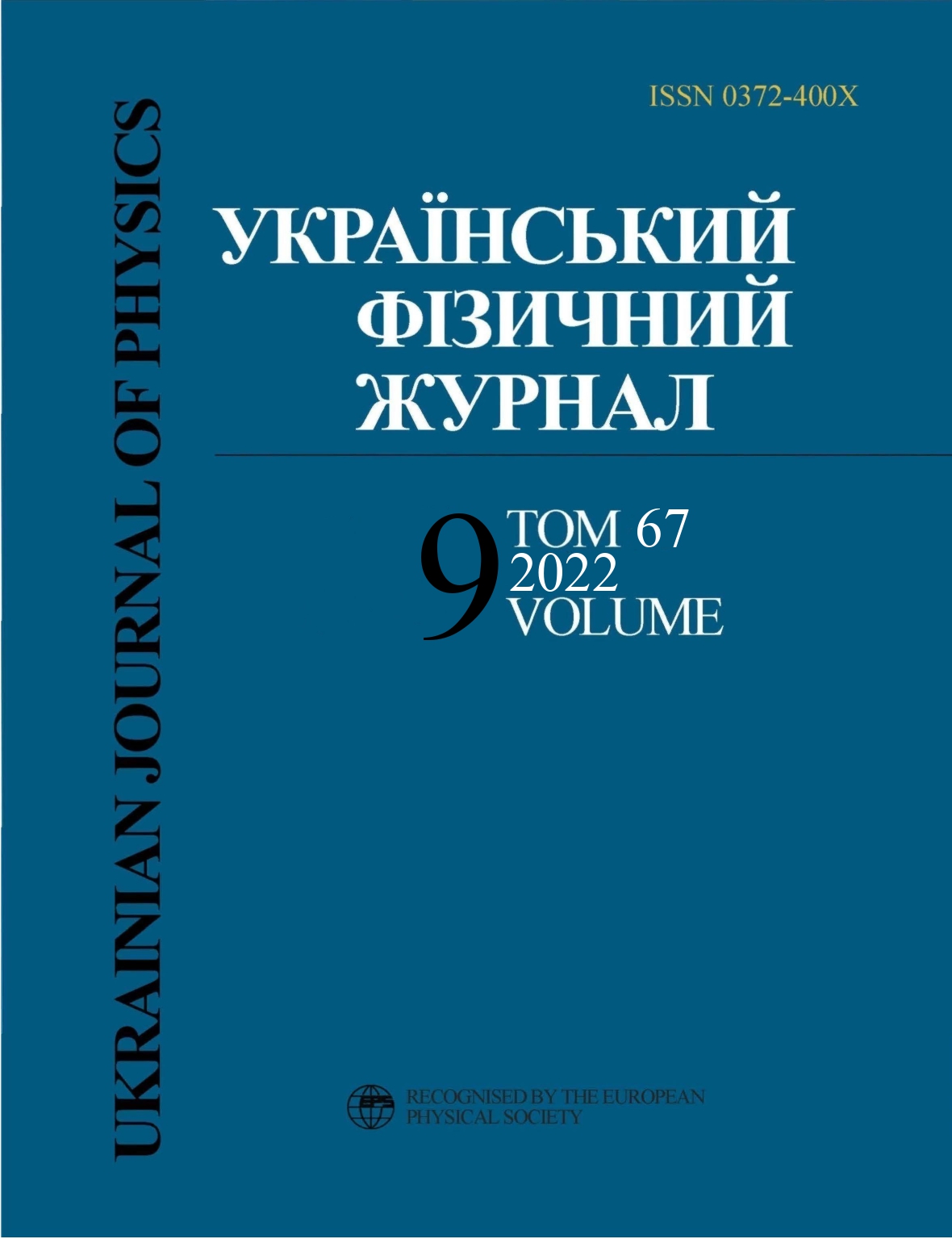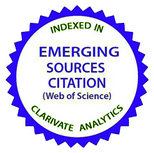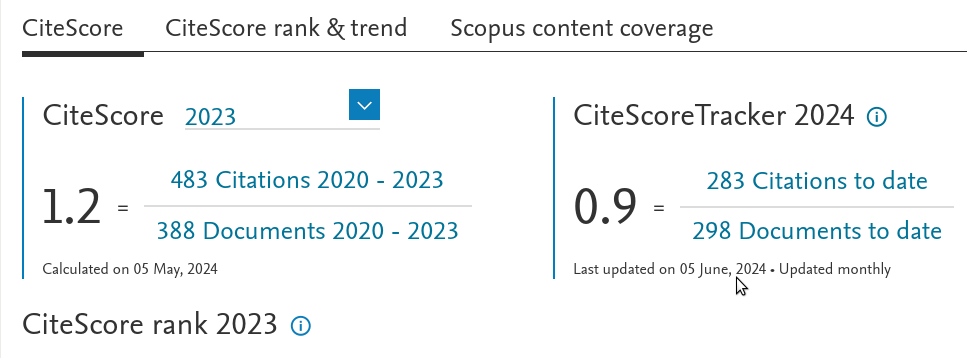Перерізи пружного розсіяння, одержані на основі потенціалу модифікованого методу Томаса–Фермі з урахуванням кора
DOI:
https://doi.org/10.15407/ujpe67.9.645Ключові слова:
потенцiал взаємодiї мiж ядрами, модифiкований метод Томаса–Фермi, розподiл густини нуклонiв, поперечний перерiз, кор вiдштовхування, пружне розсiянняАнотація
Густини розподiлу нуклонiв та потенцiали взаємодiї мiж ядрами для реакцiй 16O + 40Ca, 16O + 56Fe та 16O + 90Zr було розраховано в рамках модифiкованого методу Томаса–Фермi, з урахуванням усiх доданкiв до членiв другого порядку по ~ у квазикласичному розкладi кiнетичної енергiї. В якостi нуклон-нуклонної взаємодiї використовувалися сили Скiрма, залежнi вiд густини нуклонiв. Знайдено параметризацiю потенцiалу взаємодiї мiж ядрами, яка добре описує величину потенцiалу, розрахованого у рамках модифiкованого пiдходу Томаса–Фермi з залежними вiд густини силами Скiрма. На основi одержаних потенцiалiв було обраховано перерiзи пружного розсiяння, що добре узгоджуються з експериментальними даними.
Посилання
R. Bass. Nuclear Reactions with Heavy Ion (Springer, 1980) [ISBN: 978-3-642-05718-2].
G.R. Satchler. Direct Nuclear Reactions (Clarendon Press, 1983) [ISBN-13: 978-0198512691, ISBN-10: 0198512694].
P. Frobrich, R. Lipperheide. Theory of Nuclear Reactions (Clarendon Press, 1996) [ISBN: 9780198537830].
V.Yu. Denisov, V.A. Plujko. Problems of Nuclear Physics and Physics of Nuclear Reactions (Kyiv University Publ. Center, 2013) (in Russian).
J. Blocki, J.Randrup, W.J. Swiatecki, C.F.Tsang. Proximity forces. Ann. Phys. 105, 427 (1977).
https://doi.org/10.1016/0003-4916(77)90249-4
W.D. Myers, W.J. Swiatecki. Nucleus-nucleus proximity potential and superheavy nuclei. Phys. Rev. C 62, 044610 (2000).
https://doi.org/10.1103/PhysRevC.62.044610
V.Yu. Denisov, V.A. Nesterov. Potential of interaction between nuclei and nucleon-density distribution in nuclei. Phys. Atom. Nucl. 69, 1472 (2006).
https://doi.org/10.1134/S1063778806090067
V.Yu. Denisov. Interaction potential between heavy ions. Phys. Lett. B 526, 315 (2002).
https://doi.org/10.1016/S0370-2693(01)01513-1
H.J. Krappe, J.R. Nix, A.J. Sierk. Unified nuclear potential for heavy-ion elastic scattering, fusion, fission, and ground-state masses and deformations. Phys. Rev. C 20, 992 (1979).
https://doi.org/10.1103/PhysRevC.20.992
V.Yu. Denisov, W. Norenberg. Entrance channel potentialsin the synthesis of the heaviest nuclei. Eur. Phys. J. A 15, 375 (2002).
https://doi.org/10.1140/epja/i2002-10039-3
V.Yu. Denisov. Nucleus-nucleus potential with shell-correction contribution. Phys. Rev. C 91, 024603 (2015).
https://doi.org/10.1103/PhysRevC.91.024603
A. Winther. Dissipation, polarization and fluctuation in grazing heavy-ion collisions and the boundary to the chaotic regime. Nucl. Phys. A 594, 203 (1995).
https://doi.org/10.1016/0375-9474(95)00374-A
V.Yu. Denisov, O.I. Davidovskaya. Repulsive core potential and elastic heavy-ion collisions. Yad. Fiz. 73, 429 (2010).
https://doi.org/10.1134/S1063778810030026
V.Yu. Denisov, O.I. Davidovskaya. Repulsive core potential and elastic heavy-ion collisions. Ukr. J. Phys. 54, 669 (2009).
K.A. Brueckner, J.R. Buchler, M.M. Kelly. New theoretical approach to nuclear heavy-ion scattering. Phys. Rev. C 173, 944 (1968).
https://doi.org/10.1103/PhysRev.173.944
J. Fleckner, U. Mosel. Antisymmetrization effects in heavy ion potentials. Nucl. Phys. A 277, 170 (1977).
https://doi.org/10.1016/0375-9474(77)90268-8
O.I. Davidovskaya, V.Yu. Denisov, V.A. Nesterov. Nucleus-nucleus potential with repulsive core and elastic scattering. Part 1. Nucleus-nucleus interaction potential. Yadern. Fiz. Energ. 11, No. 1, 25 (2010).
O.I. Davidovskaya, V.Yu. Denisov, V.A. Nesterov. Nucleus-nucleus potential with repulsive core and elastic scattering. Part 2. The elastic scattering cross sections with and without core. Yadern. Fiz. Energ. 11, No. 1, 33 (2010).
V.Yu. Denisov, O.I. Davidovskaya. Elastic scattering of heavy ions and nucleus-nucleus potential with a repulsive core. Bull. Russ. Acad. Sci. Phys. 74, 611 (2010).
https://doi.org/10.3103/S1062873810040325
O.I. Davidovskaya, V.Yu. Denisov, V.A. Nesterov. Effective nucleus-nucleus potential with the contribution of the kinetic energy of nucleons, and the cross-sections of elastic scattering and subbarrier fusion. Ukr. J. Phys. 62, 473 (2017).
https://doi.org/10.15407/ujpe62.06.0473
V.A. Nesterov. Effect of the Pauli Exclusion Principle and the Polarization of Nuclei on the Potential of Their Interaction for the Example of the 16O+16O System. Phys. At. Nucl. 76, 577 (2013).
https://doi.org/10.1134/S106377881304008X
V.Yu. Denisov, O.I. Davidovskaya. Elastic 16O+16O scattering and nucleus-nucleus potential with a repulsive core. Ukr. J. Phys. 55, 861 (2010).
O.I. Davydovska, V.Yu. Denisov, V.O. Nesterov. Nucleusnucleus potential, the elastic scattering and subbarrier fusion cross sections for the system 40Ca + 40Ca. Yadern. Fiz. Energ. 19, 203 (2018).
O.I. Davydovska, V.Yu. Denisov, V.A. Nesterov. Comparison of the nucleus-nucleus potential evaluated in the double-folding and energy density approximations and the cross-sections of elastic scattering and fusion of heavy ions. Nucl. Phys. A 989, 214 (2019).
https://doi.org/10.1016/j.nuclphysa.2019.06.004
V.O. Nesterov, O.I. Davydovska, V.Yu. Denisov. Calculation of the cross-sections of sub-barrier fusion and elastic scattering of heavy ions using the modified Thomas-Fermi approach with the Skyrme force. Yadern. Fiz. Energ. 20, No. 4, 349 (2019).
https://doi.org/10.15407/jnpae2019.04.349
P. Ring, P. Schuck. The Nuclear Many-Body Problem. (Springer-Verlag, 1980) [ISBN: 978-3-540-21206-5].
https://doi.org/10.1007/978-3-642-61852-9
M. Brack, C. Guet, H.B. Hakanson. Self-consistent semiclassical description of average nuclear properties - a link between microscopic and macroscopic models. Phys. Rep. 123, 275 (1985).
https://doi.org/10.1016/0370-1573(86)90078-5
M. Brack, R.K. Bhaduri, Semiclassical Physics. (AddisonWesley Publ. Co, 1997) [ISBN-10: 0813340845; ISBN-13: 978-0813340845].
V.M. Strutinsky, A.G. Magner, V.Yu. Denisov. Density distributions in nuclei. Z. Phys. A 322, 149 (1985).
https://doi.org/10.1007/BF01412028
J. Dobaczewski, W. Nazarewicz, P.G. Reinhard. Pairing interaction and self-consistent densities in neutron-rich nuclei. Nucl. Phys. A 693, 361 (2001).
https://doi.org/10.1016/S0375-9474(01)00993-9
D. Vautherin, D.M. Brink. Hartree-Fock calculations with Skyrme's interaction. I. Spherical nuclei. Phys. Rev. C 5, 626 (1972).
https://doi.org/10.1103/PhysRevC.5.626
J. Bartel, P. Quentin, M. Brack, C. Guet, H.B. Hakansson. Towards a better parametrisation of Skyrme-like effective forces: A critical study of the SkM force. Nucl. Phys. A 386, 79 (1982).
https://doi.org/10.1016/0375-9474(82)90403-1
S.A. Fayans, S.V. Tolokonnikov, E.L. Trykov, D. Zawischac. Nuclear isotope shifts within the local energy-density functional approach. Nucl. Phys. A 676, 49 (2000).
https://doi.org/10.1016/S0375-9474(00)00192-5
J.W. Negele. The mean-field theory of nuclear structure and dynamics. Rev. Mod. Phys. 54, 913 (1982).
https://doi.org/10.1103/RevModPhys.54.913
T.H.R. Skyrme. The effective nuclear potential. Nucl. Phys. 9, 615 (1959).
https://doi.org/10.1016/0029-5582(58)90345-6
H. Feshbach. The optical model and its justification. Annu. Rev. Nucl. Sci. 8, 49 (1958).
https://doi.org/10.1146/annurev.ns.08.120158.000405
H. Friedrich, L.F. Canto. Effective nucleus-nucleus potentials derived from the generator coordinate method. Nucl. Phys. A 291, 249 (1977).
https://doi.org/10.1016/0375-9474(77)90210-X
S. Hossain, M.N.A. Abdullah, Md. Zulfiker Rahman, A.K. Basak, F.B. Malik. Non-monotonic potentials for 6Li elastic scattering at 88 MeV. Phys. Scr. 87, 015201 (2013).
https://doi.org/10.1088/0031-8949/87/01/015201
S. Hossain, Md. Masum Billah, M.M.B. Azad, F. Parvin. Non-monotonic potential description of alpha-Zr refractive elastic scattering. Physica G 40, 105109 (2013).
https://doi.org/10.1088/0954-3899/40/10/105109
S. Hossain, A.S.B. Tariq, A. Nilima, M. Sujan Islam, R. Majumder, M.A. Sayed, M.M. Billah, M.M.B. Azad, M.A. Uddin, I. Reichstein, F.B. Malik, A.K. Basak. Dependence of the 16O+16O nuclear potential on nuclear incompressibility. Phys. Rev. C 91, 064613 (2015).
https://doi.org/10.1103/PhysRevC.91.064613
S. Misicu, H. Esbensen. Hindrance of heavy-ion fusion due to nuclear incompressibility. Phys. Rev. Lett. 96, 112701 (2006).
https://doi.org/10.1103/PhysRevLett.96.112701
S. Misicu, H. Esbensen. Signature of shallow potentials in deep sub-barrier fusion reactions. Phys. Rev. C 75, 034606 (2007).
https://doi.org/10.1103/PhysRevC.75.034606
S. Misicu, F. Carstoiu. Absence of a maximum in the S factor at deep sub-barrier energies in the fusion reaction 40Ca + 40Ca. Phys. Rev. C 84, 051601(R) (2011).
https://doi.org/10.1103/PhysRevC.84.051601
O.I. Davydovska, V.A. Nesterov, V.Yu. Denisov. The nucleus-nucleus potential within the extended Thomas-Fermi method and the cross-sections of subbarrier fusion and elastic scattering for the systems 16O+58,60,62,64Ni. Nucl. Phys. A 1002, 121994 (2020).
https://doi.org/10.1016/j.nuclphysa.2020.121994
J. Orloff, W.W. Daehnick. Elastic scattering of 16O by 48Ti, 40Ca, 27Al, 12C, 7Li, and 6Li. Phys. Rev. C 3, 430 (1971).
K.E. Rehm, W. Henning, J.R. Erskine, D.G. Kovar, M.H. Macfarlane, S.C. Pieper and M. Rhoades-Brown. Inelastic scattering of 16O from 40,42,44,48Ca. Phys. Rev. C 25, 1915 (1982).
https://doi.org/10.1103/PhysRevC.25.1915
K.E. Rehm, J. Gehring, B. Glagola, W.C. Ma, W. Phillips, F.L.H. Wolfs. Energy dependence of one- and two-particle transfer reactions in the system 16O+90Zr. Z. Phys. A A340, 281 (1991).
https://doi.org/10.1007/BF01294676
A.W. Obst, D.L. McShan, R.H. Davis. Elastic scattering of 16O by 56Fe, 70,74Ge, and 90Zr. Phys. Rev. C 6, 1814 (1972).
Downloads
Опубліковано
Як цитувати
Номер
Розділ
Ліцензія
Ліцензійний Договір
на використання Твору
м. Київ, Україна
Відповідальний автор та співавтори (надалі іменовані як Автор(и)) статті, яку він (вони) подають до Українського фізичного журналу, (надалі іменована як Твір) з одного боку та Інститут теоретичної фізики імені М.М. Боголюбова НАН України в особі директора (надалі – Видавець) з іншого боку уклали даний Договір про таке:
1. Предмет договору.
Автор(и) надає(ють) Видавцю безоплатно невиключні права на використання Твору (наукового, технічного або іншого характеру) на умовах, визначених цим Договором.
2. Способи використання Твору.
2.1. Автор(и) надає(ють) Видавцю право на використання Твору таким чином:
2.1.1. Використовувати Твір шляхом його видання в Українському фізичному журналі (далі – Видання) мовою оригіналу та в перекладі на англійську (погоджений Автором(ами) і Видавцем примірник Твору, прийнятого до друку, є невід’ємною частиною Ліцензійного договору).
2.1.2. Переробляти, адаптувати або іншим чином змінювати Твір за погодженням з Автором(ами).
2.1.3. Перекладати Твір у випадку, коли Твір викладений іншою мовою, ніж мова, якою передбачена публікація у Виданні.
2.2. Якщо Автор(и) виявить(лять) бажання використовувати Твір в інший спосіб, як то публікувати перекладену версію Твору (окрім випадку, зазначеного в п. 2.1.3 цього Договору); розміщувати повністю або частково в мережі Інтернет; публікувати Твір в інших, у тому числі іноземних, виданнях; включати Твір як складову частину інших збірників, антологій, енциклопедій тощо, то Автор(и) мають отримати на це письмовий дозвіл від Видавця.
3. Територія використання.
Автор(и) надає(ють) Видавцю право на використання Твору способами, зазначеними у п.п. 2.1.1–2.1.3 цього Договору, на території України, а також право на розповсюдження Твору як невід’ємної складової частини Видання на території України та інших країн шляхом передплати, продажу та безоплатної передачі третій стороні.
4. Строк, на який надаються права.
4.1. Договір є чинним з дати підписання та діє протягом усього часу функціонування Видання.
5. Застереження.
5.1. Автор(и) заявляє(ють), що:
– він/вона є автором (співавтором) Твору;
– авторські права на даний Твір не передані іншій стороні;
– даний Твір не був раніше опублікований і не буде опублікований у будь-якому іншому виданні до публікації його Видавцем (див. також п. 2.2);
– Автор(и) не порушив(ли) права інтелектуальної власності інших осіб. Якщо у Творі наведені матеріали інших осіб за виключенням випадків цитування в обсязі, виправданому науковим, інформаційним або критичним характером Твору, використання таких матеріалів здійснене Автором(ами) з дотриманням норм міжнародного законодавства і законодавства України.
6. Реквізити і підписи сторін.
Видавець: Інститут теоретичної фізики імені М.М. Боголюбова НАН України.
Адреса: м. Київ, вул. Метрологічна 14-б.
Автор: Електронний підпис від імені та за погодження всіх співавторів.

















